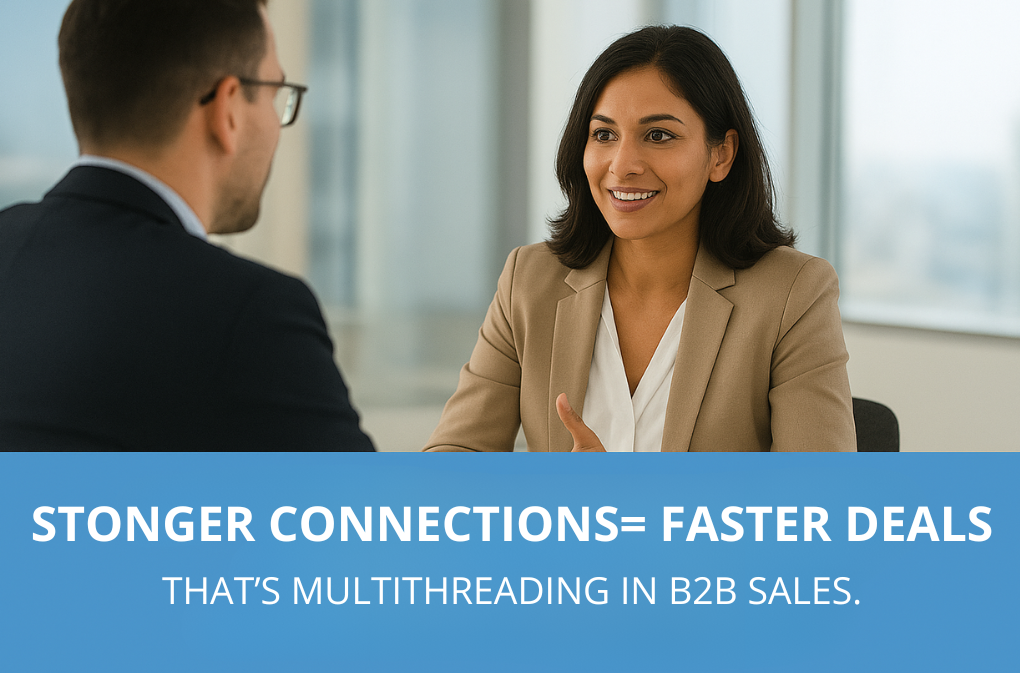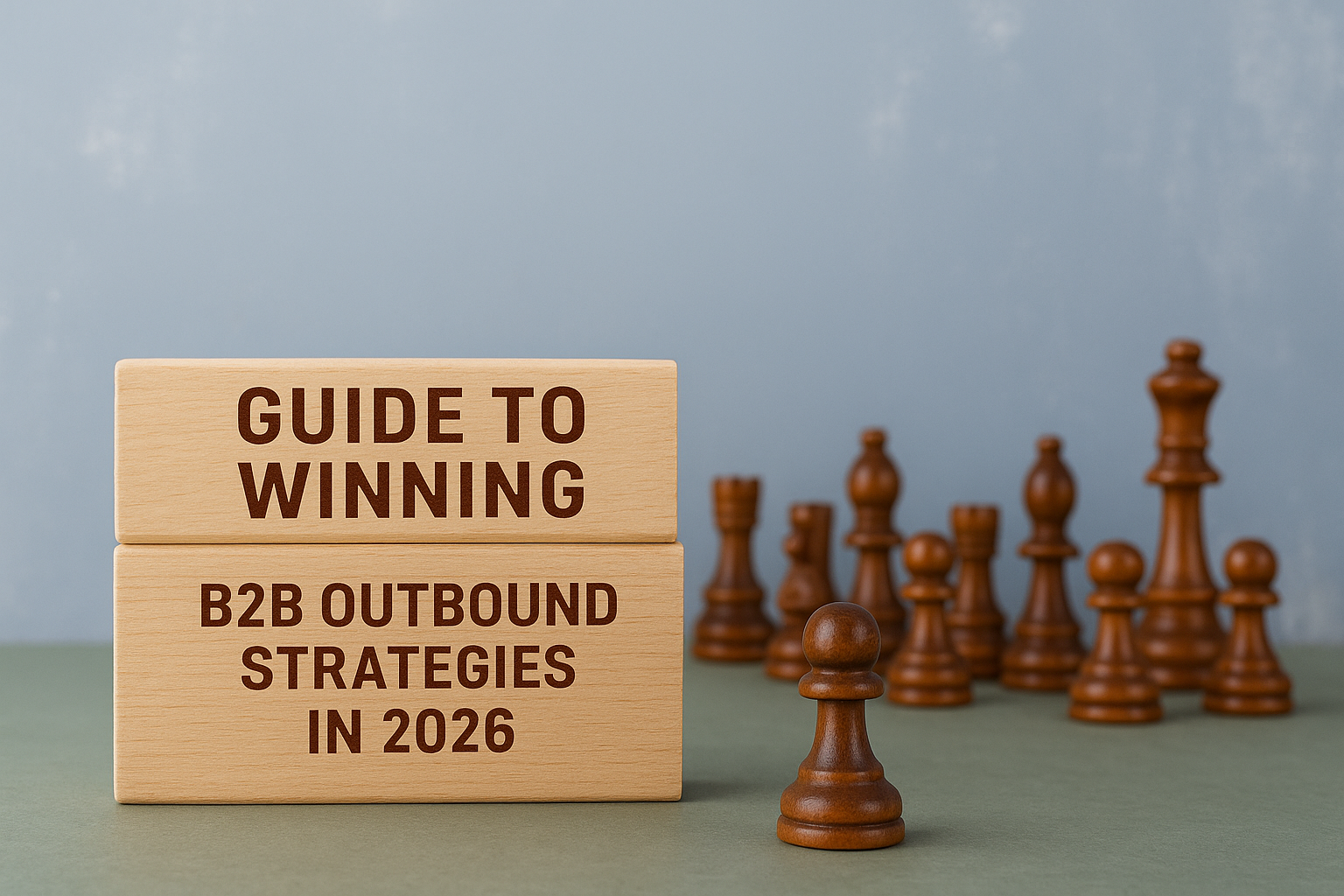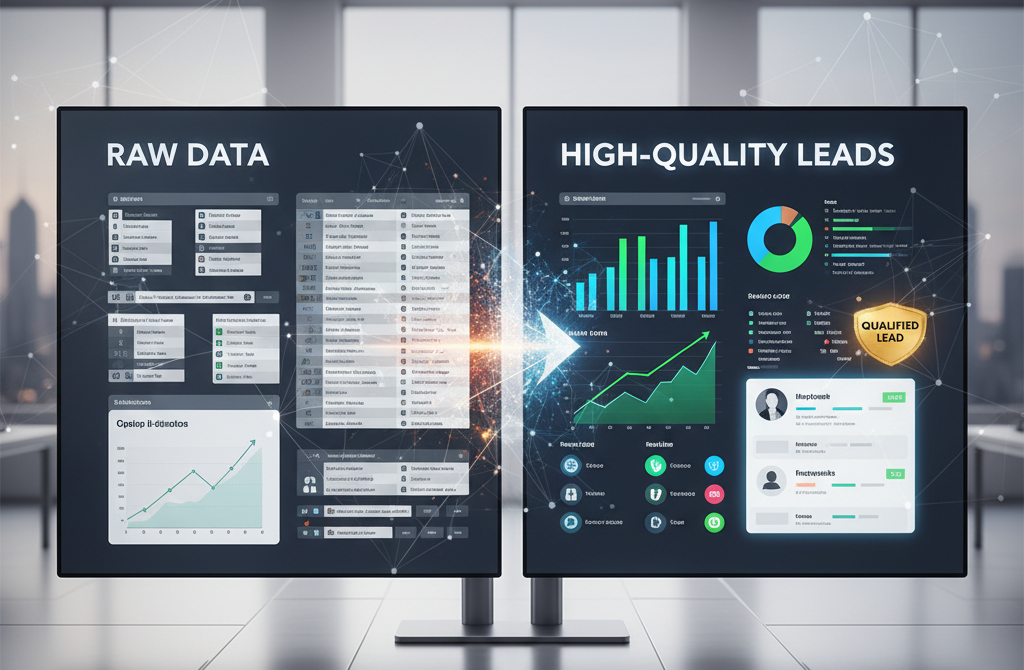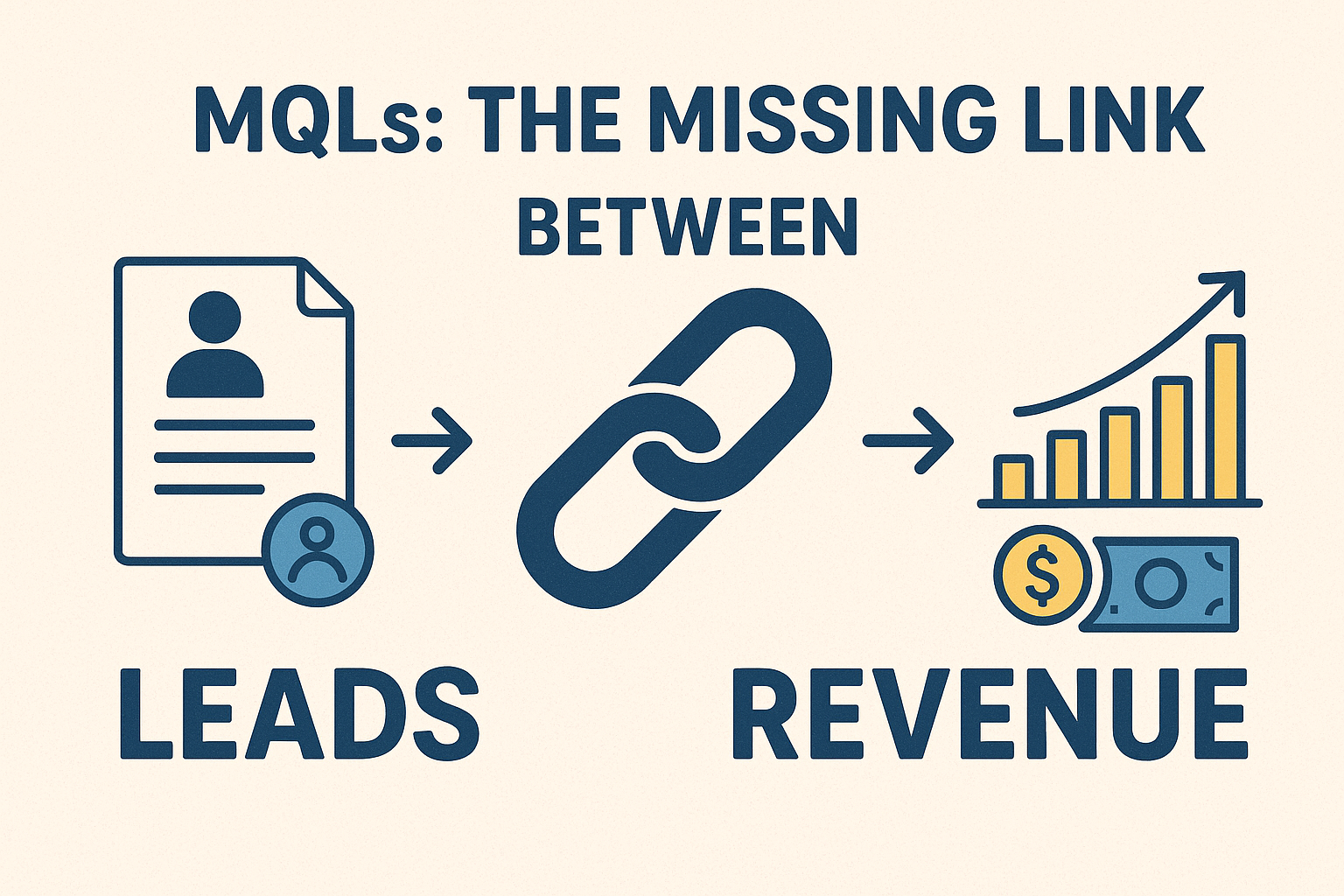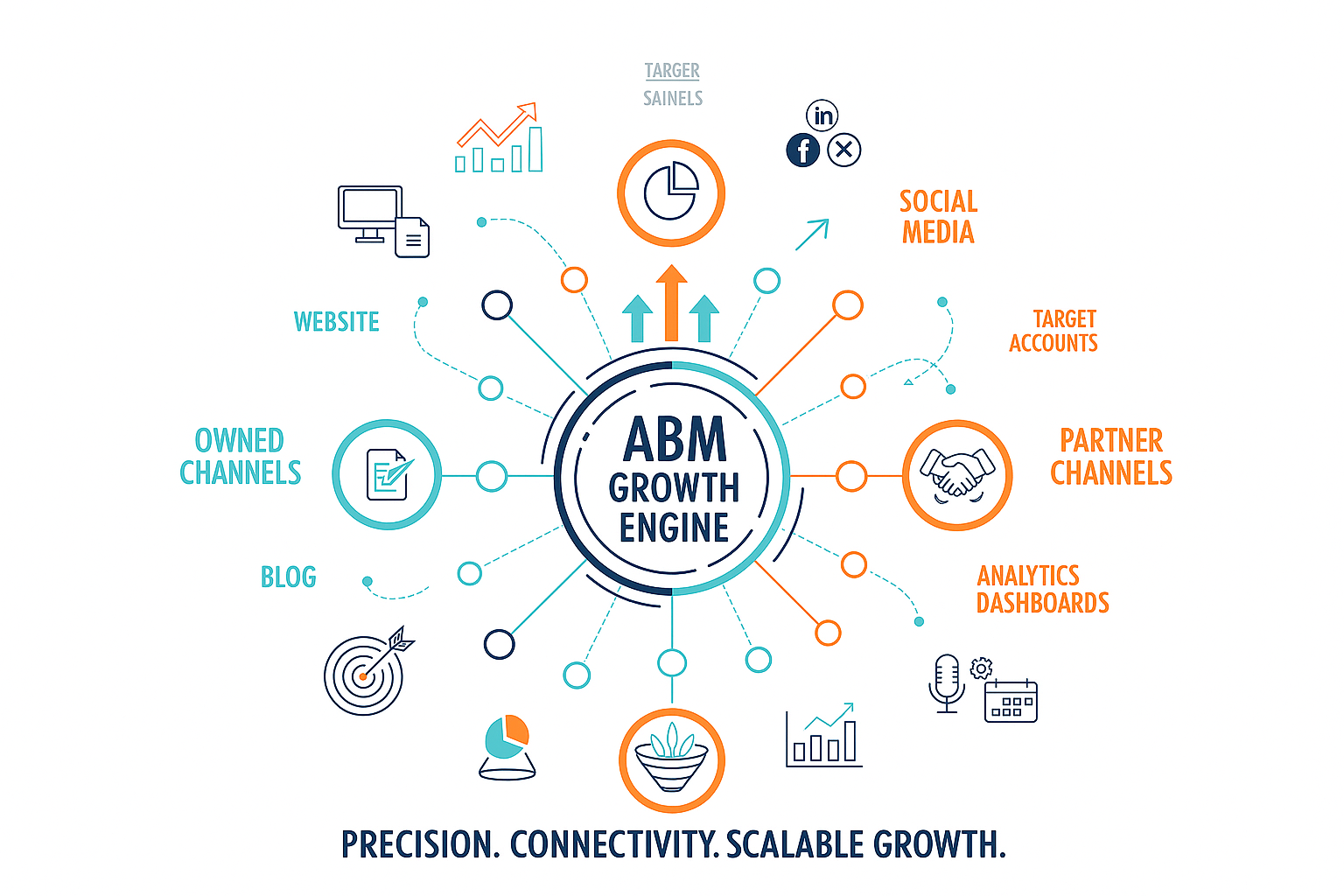Here’s what every sales professional needs to know: B2B deals don’t fall apart because your product isn’t good enough, they stall because you’re not connected to the right people.
In today’s buying environment, decisions depend on finance, IT, operations, and procurement. Relying on just one contact is like trying to win a game with only half your team on the field. Even if your champion supports you, the deal can stall the moment another decision-maker raises concerns.
That’s where multithreading in B2B sales comes in. By building relationships with multiple stakeholders across an organization, you reduce risk, accelerate decision-making, and create stronger alignment that leads to faster, more predictable wins.
Table of Contents
ToggleWhat Does Multithreading in B2B Sales Really Mean?
Multithreading in B2B sales is about building trust across an entire account, not just with one contact. When you connect with multiple stakeholders, you reduce risk and strengthen your influence within the buying group. Even if one decision-maker steps back or goes silent, your deal continues to move forward. By spreading trust and relationships across the team, you create momentum, stability, and a much stronger path to closing the deal.
Think of it like this: if a company is your prospect, multithreading means talking not only to the buyer but also to:
- The CFO who cares about ROI and budget.
- The IT manager who worries about integrations and data security.
- The end users who want usability and support.
- The executive team who needs a big-picture impact.
Why it matters: Today’s buying committees are bigger than ever. Gartner reports that 6 to 10 people are typically involved in B2B buying decisions. If you’re only connected to one, you’re already at a disadvantage.
Why Single-Threading is Holding Your Deals Back
Single-threading = relying on a single contact. And while it may feel easier, it’s a risky shortcut. Here’s why:
- High vulnerability – If your contact leaves, changes role, or deprioritizes the deal, everything collapses.
- Slower approvals – One person can’t push a deal across departments; it leads to endless “waiting.”
- Limited influence – Your contact might not even have decision-making power.
- Stalled pipeline – One objection from finance or IT can stop everything cold.
In short, single-threading makes your pipeline fragile.
The Real Power of Multithreading in Sales
When you multithread, you:
- Reduce deal risk – even if one contact disengages, others keep the process alive.
- Accelerate decision-making – multiple people are aligned faster.
- Build trust across levels – credibility spreads when more stakeholders buy into your solution.
- Improve win rates – CSO Insights found that win rates jump significantly when sellers engage multiple contacts.
- Lay groundwork for expansion – engaging multiple people now makes upselling and cross-selling easier later.
Multithreading is not about spreading yourself thin, it is about deepening trust across the account so deals never lose pace.
Multithreading vs. Single-Threading: The Dealbreaker Difference
Let’s compare the two approaches:
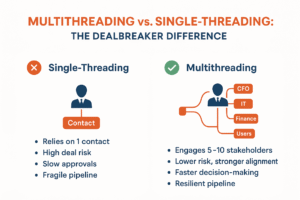
Bottom line: Single-threading leaves your deals vulnerable. Multithreading makes them stronger, faster, and more reliable.
How to Multithread Effectively (Without Overwhelming Prospects)
Multithreading doesn’t mean blasting emails to everyone in the company. It’s about strategic, thoughtful engagement.
Here’s how to do it right:
- Map the account – Identify the key decision-makers, influencers, and blockers.
- Tailor your outreach – Customize messages based on each stakeholder’s role and concerns.
- Add value at every step – Share insights, case studies, or ROI data that matter to each person.
- Leverage your champion – Ask your first contact to introduce you to others.
- Use multiple channels – Email, LinkedIn, phone calls, and events. Don’t stick to just one.
Listen actively: Each stakeholder has different concerns, finance wants cost savings, IT wants integrations, leadership wants strategy.
Step-by-Step Guide to Building a Multithreading Strategy
Here’s a simple framework your sales team can follow:
- Research & Map Stakeholders – Use LinkedIn, CRM, or tools like ZoomInfo to identify decision-makers.
- Engage Early – Don’t wait until late stages to connect with finance or IT.
- Create Role-Specific Messaging – Build a mini-playbook: “How to talk to CFO,” “How to talk to IT,” etc.
- Leverage Existing Champions – Ask for intros to others in the org.
- Track Progress in CRM – Log all contacts and interactions, multithreading only works if it’s visible.
- Build Consensus – Share value propositions that resonate with everyone.
- Nurture Post-Sale – Multithreading isn’t just for closing, it helps retention and upselling too.
Why Multithreading is the Future of B2B Sales
B2B sales is no longer about one-to-one persuasion, it’s about building organizational alignment. Deals are more complex, buying groups are larger, and competition is fiercer.
Multithreading is the strategy that helps sales teams:
- Win faster.
- Protect pipeline from risks.
- Build long-term relationships inside accounts.
It’s not just a tactic, it’s the future of B2B sales success.
Conclusion
If your sales strategy still relies on single-threading, you’re leaving deals at risk. Multithreading isn’t optional anymore, it’s the difference between deals that stall and deals that close.
By engaging multiple stakeholders, tailoring your outreach, and building trust across the buying committee, you not only reduce risks but also accelerate your entire pipeline.
In short: the future of B2B sales belongs to the multithreading.
For deeper strategies and practical tips on B2B sales, visit us at PangeaGlobalServices.
FAQs
1. How to do multithreading in sales effectively?
By identifying all stakeholders early, tailoring outreach to their concerns, and engaging through multiple touchpoints.
2. What is the main goal of multithreading in a sales strategy?
To reduce risk and accelerate deal cycles by engaging multiple stakeholders instead of relying on one.
3. How to multithread in sales?
Map the account, connect with champions, ask for introductions, personalize communication, and track everything in CRM.
4. What does multithread mean in sales?
It means engaging multiple stakeholders in a target account to build consensus and keep deals moving.
5. How to deal with competitive markets in B2B sales?
By multithreading, you strengthen relationships, reduce risk, and increase credibility compared to competitors.
